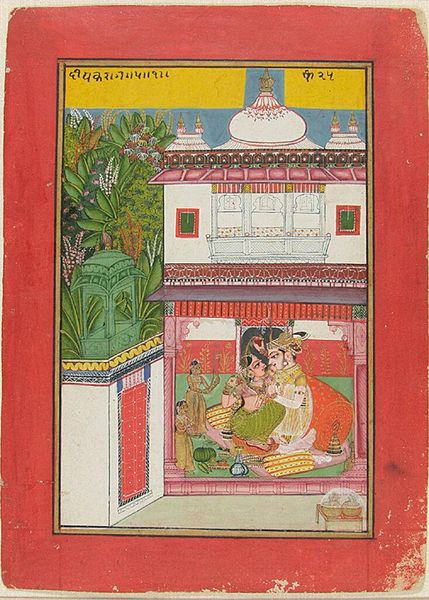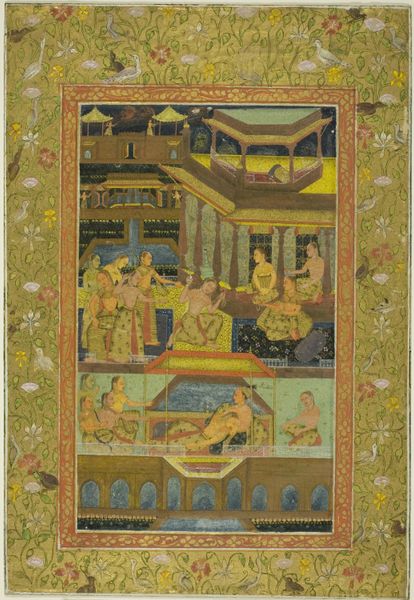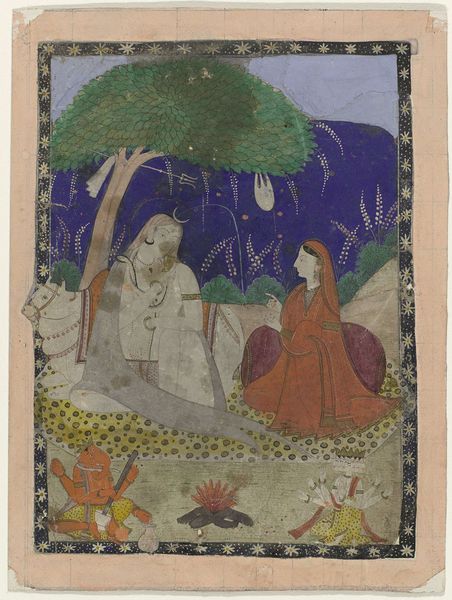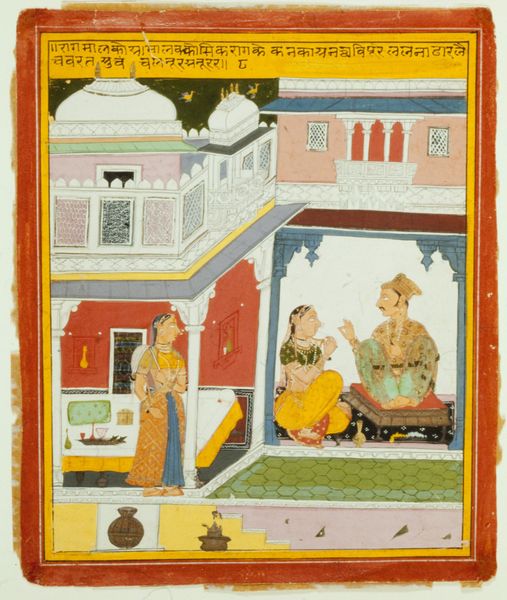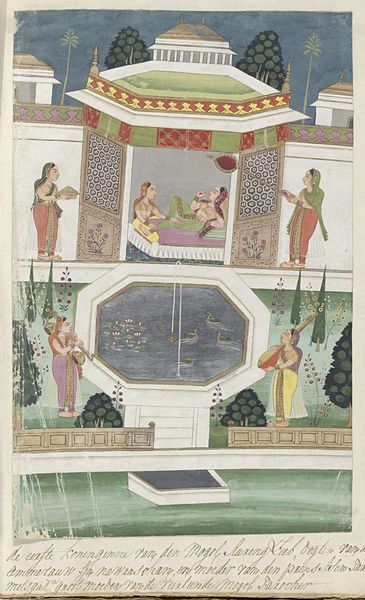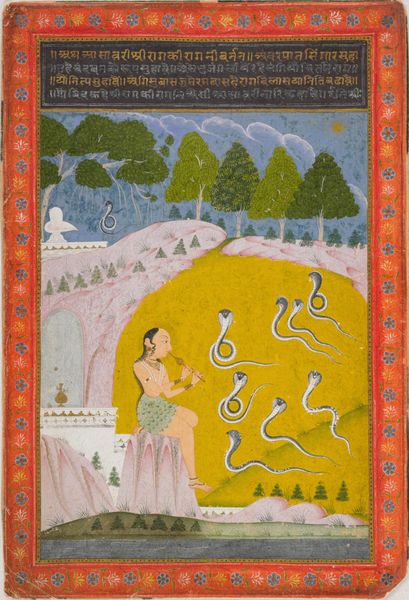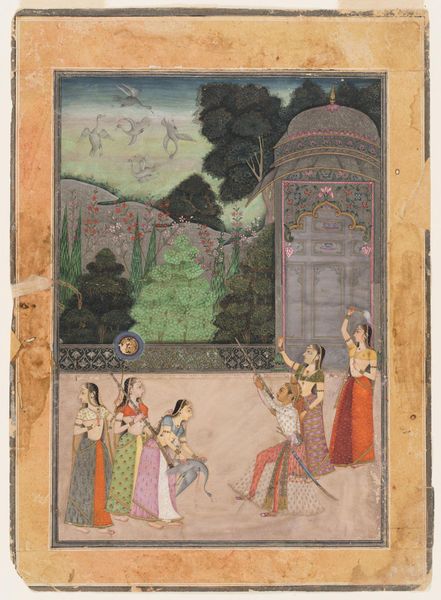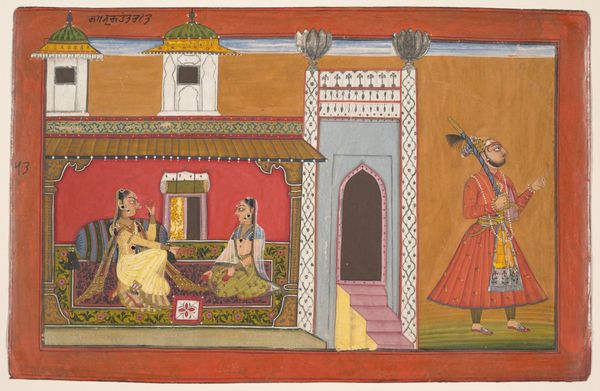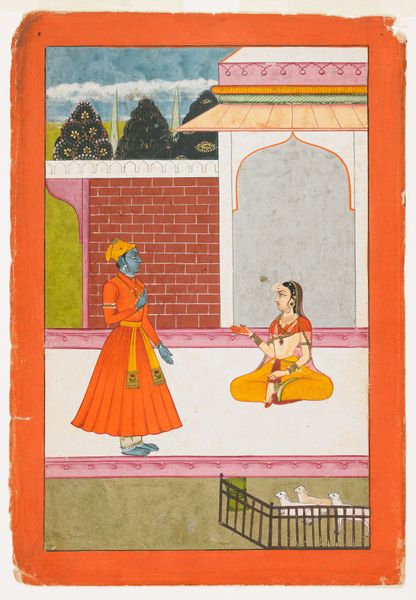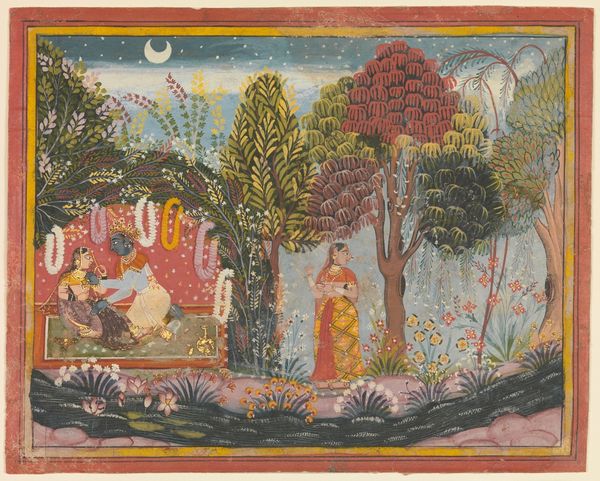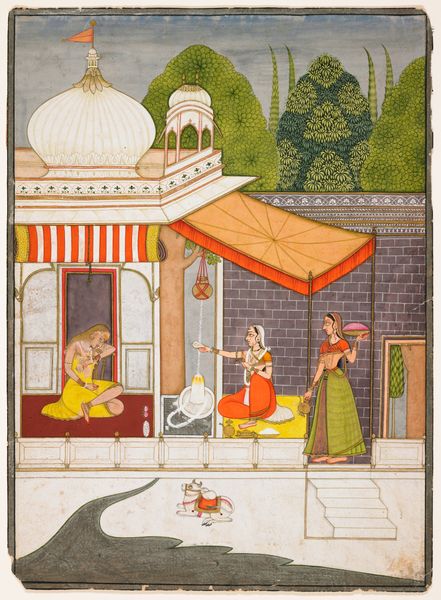
painting, acrylic-paint
#
portrait
#
painting
#
asian-art
#
acrylic-paint
#
naive art
#
pop art-influence
#
islamic-art
#
genre-painting
#
miniature
#
erotic-art
Dimensions: 8 1/2 x 6 1/16 in. (21.59 x 15.4 cm)
Copyright: Public Domain
Editor: This acrylic painting is called "Lovers," and it dates back to about 1675. It appears to be from an anonymous Asian artist. I’m really intrigued by the way the figures are rendered, especially how flat the picture plane seems overall. How would you interpret the spatial organization here? Curator: The immediate impact lies in the artist’s adept manipulation of pictorial space. Consider the seemingly flattened perspective, particularly in the architectural elements at the top of the picture plane. Does the arrangement of these elements enhance the emotional tension of the scene? Editor: It almost feels intentional – like a choice to prioritize design over realism, heightening the intimacy instead of creating distance. Curator: Precisely. Note the juxtaposition of textures and patterns. The intricate details of the couple’s clothing play against the more austere, geometric shapes in the architectural backdrop. Can you see the effect that interplay has on the painting's rhythm? Editor: Yes, it seems to set the stage for the relationship, which contrasts between the busy passion of being with someone and the calmness of alone time. It helps give meaning to that balance in one's life. Curator: Yes, that balance provides us with a way of decoding the internal state, a concept well studied by semiotics. Consider, for example, how our gaze shifts between the architectural structures and the intimacy in the painting's foreground, oscillating between order and fervor. Do the chosen colors add to this effect? Editor: Definitely, the way that those primary colors come together in small patterns but remain muted as part of a whole really works in this. Curator: The considered application of such materials is the strength behind the composition. It prompts us to reflect on the core of formalist interpretations. I've truly gained a new outlook today. Editor: Me too. Focusing on form really revealed so much in this piece!
Comments
minneapolisinstituteofart almost 2 years ago
⋮
These two leaves are classic seventeenth-century Malwa school paintings, one of the earliest and historically most important Rajput schools. At Mandu, the capital of Malwa, miniature painting can be traced back to the fifteenth century, when it developed as a variant of the Jain style of western India. By the seventeenth century, however, this purely Malwa style had evolved. Simple geometric compositions predominate, and colors are bold and highly symbolic, while naturalism and volume are negated. Human figures are typically shown against red or green backgrounds, which dramatically flatten the pictorial surface, thereby lessening the sense of space. Ragamala paintings illustrate modes of classical Indian music, usually personifying characteristics of love or heroic behavior. These miniatures might illustrate the Ramkali Ragini ragamala but could also be based on a classic of erotic literature such as the Kamasutra.
Join the conversation
Join millions of artists and users on Artera today and experience the ultimate creative platform.

